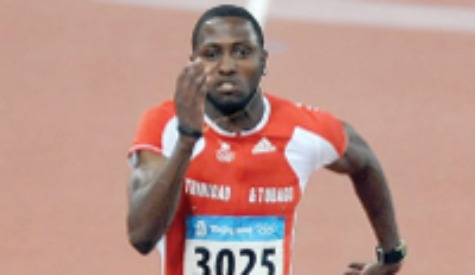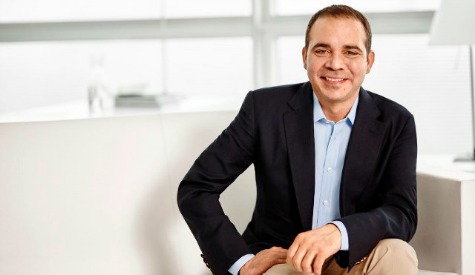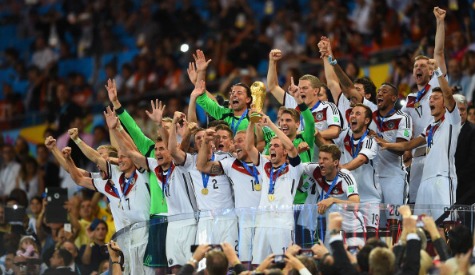 ...22 medals at Carifta Games
...22 medals at Carifta Games
Akanni Hislop and Kayelle Clarke both won gold medals in the final session at the 44th Carifta Games to bring T&T's overall tally to 22 medals at the end of the meet at the Kim Collins Stadium in Basseterre, St Kitts, on Monday night.
T&T finished with six gold, eight silver and eight bronze to end third in the medal standings behind Jamaica (85) and Bahamas (31).
Entering the last session with 15 medals, T&T added two gold, four bronze and one silver including three 4x400metre medals.
Hislop, who entered the boys 200metre Under-18 final with the fastest time of 21.25 seconds, went under 21 seconds to win gold in 20.91.
It was a close battle for silver, but Javan Martin of the Bahamas prevailed in 21.16 ahead of Jamaican Xavior Angus in 21.17.
Clarke, who finished fourth in the girls 100m U-20 final, grabbed gold in the girls 200m U-20 in 23.12. Jamaican Saqukine Cameron claimed silver in 23.32, while Bahamian Keianna Albury won bronze in 23.49.
Snatching bronze in the boys long jump U-18 was Clement Campbell. Campbell saved his best for last disturbing the sand at the 6.86m mark in his last (sixth) jump. Jamaicans Pakito Dudley (7.03m) and Shammawi Wellington (7.02m) won gold and silver respectively.
After the T&T 4x100 teams picked up three medals on Sunday night, the 4x400 teams earned one silver and two bronze. Both the girls and boys U-20 4x400m teams won bronze, while the boys 4x400m U-18 quartet grabbed silver. The girls 4x400m U-18 team finished a disappointing fifth. On Sunday the girls 4x100m U-20 unit finished third, but was unfortunately disqualified for a baton exchange outside the zone.
The team returned home yesterday and both T&TOC president Brian Lewis and Sportt’s executive manager Anthony Creed were at the airport to greet them.
Results
Boys 200m Under-18 Finals
1 Hislop, Akanni - T&T - 20.91
2 Martin, Javan - Bahamas - 21.16
3 Angus, Xavior - Jamaica - 21.17
Girls 200m U-20 Finals
1 Clarke, Kayelle - T&T - 23.12
2 Cameron, Saqukine - Jca - 23.32
3 Albury, Keianna - Bahamas - 23.49
Boys Long Jump U-18 Finals
1 Dudley, Pakito - Jamaica - 7.03m
2 Wellington, Shammawi - Jca - 7.02m
3 Campbell, Clement - T&T - 6.86m
Girls 100 M Hurdles U-20 Finals
1 Thompson, Yanique - Jca - 13.21
2 Williams, Jeanine – Jca - 13.40
3 Parris, Jeminise – T&T - 13.85
Boys 4x400m Relay U-18 Finals
1 Jamaica - 3:12.07
2 T&T - 3:14.23 (Kobe John, Terry Frederick, Judah Taylor, Jacob St Clair)
3 Bahamas - 3:18.12
Girls 4x400m Relay U-20 Finals
1 Jamaica - 3:37.96
2 British Virgin Islands - 3:46.43
3 T&T - 3:47.55 (Thyla-Maree Scott, Kayelle Clarke, Jeunice Maxime, Jeminise Parris)
Standings
Country G S B Total
Jamaica 41 25 19 85
Bahamas 8 13 10 31
T&T 6 8 8 22
Barbados 7 4 5 16
Grenada 1 3 4 8

 Basseterre
Basseterre As the drama that is general elections in T&T begins in earnest, there are calls for a greater quality of public engagement. Concerns have been expressed in many quarters. There is a pervading sense of frustration and anger as the populace seeks answers to the fundamental question—what will the future hold for the twin island republic?
As the drama that is general elections in T&T begins in earnest, there are calls for a greater quality of public engagement. Concerns have been expressed in many quarters. There is a pervading sense of frustration and anger as the populace seeks answers to the fundamental question—what will the future hold for the twin island republic? …opens season with windy 200 win
…opens season with windy 200 win FIFA Presidential candidate Prince Ali Bin Al Hussein today published his manifesto to reform football's world governing body, with the establishment of a formal continental rotation system for the World Cup among its key elements.
FIFA Presidential candidate Prince Ali Bin Al Hussein today published his manifesto to reform football's world governing body, with the establishment of a formal continental rotation system for the World Cup among its key elements. Prince Ali claimed there was a "culture of intimidation" within football's governing body at the launch of his campaign in February and insisted he cannot be a part of FIFA if incumbent President Sepp Blatter is re-elected.
Prince Ali claimed there was a "culture of intimidation" within football's governing body at the launch of his campaign in February and insisted he cannot be a part of FIFA if incumbent President Sepp Blatter is re-elected. The evaluation and optimisation of the international match calendar is another prominent pledge, with a review of the world ranking system and a full and open debate about the place of technology in football also proposed.
The evaluation and optimisation of the international match calendar is another prominent pledge, with a review of the world ranking system and a full and open debate about the place of technology in football also proposed. Five gold medals, one silver and two bronze, were on the cards for the Trinidad and Tobago swim team on the opening night of the 2015 Carifta Championships at the Barbados Aquatic Centre Friday night. The effort in the pool was boosted in the Boys’ 15-17 4x100m relay, where the T&T team won gold, clocking three minutes, 36.50 seconds. Currently, the national team stands at third on the overall standings after the first day of competition.
Five gold medals, one silver and two bronze, were on the cards for the Trinidad and Tobago swim team on the opening night of the 2015 Carifta Championships at the Barbados Aquatic Centre Friday night. The effort in the pool was boosted in the Boys’ 15-17 4x100m relay, where the T&T team won gold, clocking three minutes, 36.50 seconds. Currently, the national team stands at third on the overall standings after the first day of competition.